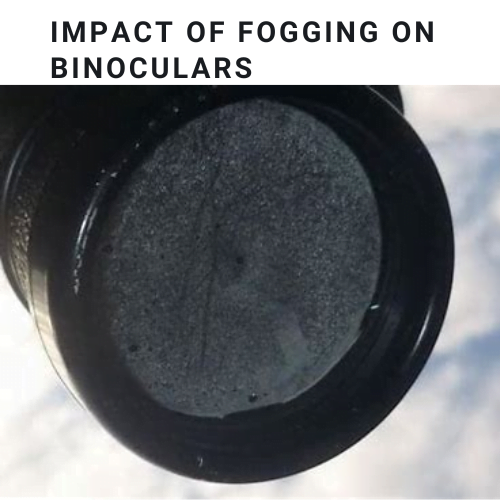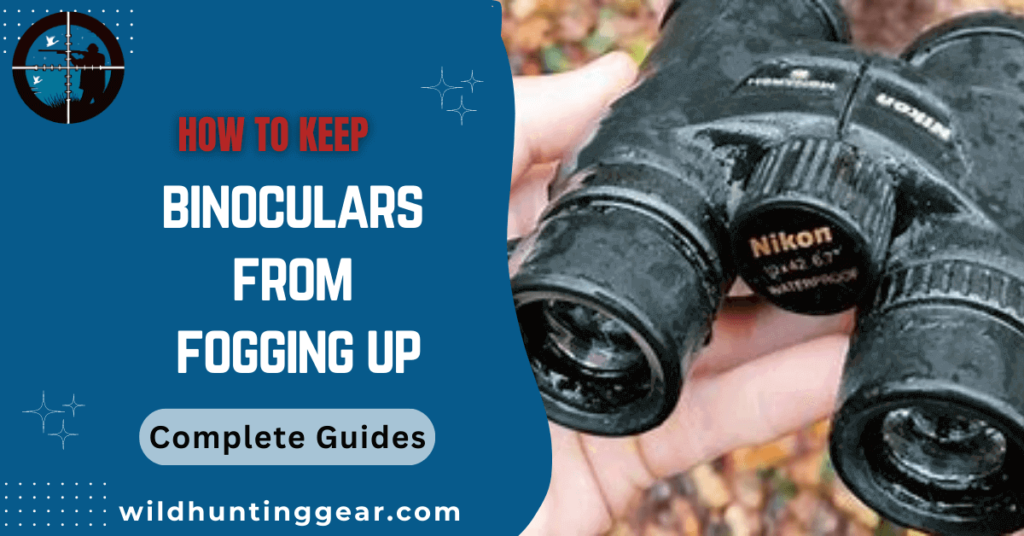Binoculars are essential tools for outdoor enthusiasts, nature lovers and sports spectators, allowing them to observe distant objects with clarity and detail. However, one common frustration that can hinder the binocular experience is fogging.
Fogging occurs when temperature and moisture differentials cause condensation to form on the lenses, obstructing the view and making it difficult to use the binoculars effectively. To ensure a clear and uninterrupted viewing experience, it is crucial to employ strategies that prevent fogging.
In this article, we will explore various practical tips and techniques to keep your binoculars from fogging up, allowing youto enjoy the sights without any hindrance. By implementing these preventative measures, you can enhance the longevity and performance of your binoculars while enjoying optimal visibility in diverse weather conditions.
Understanding the causes of fogging
Fogging is caused by a rapid change in temperature and humidity, resulting in condensation on the binocular lenses. This can occur when a person holds cold binoculars for an. Because warm air contains more moisture than cool air, the relative humidity quickly increases due to the heat generated by your hands. As a result, fogging occurs on the lenses when moisture in the air combines with the colder surface temperature of the glass.
To prevent fogging, it is important to understand and identify scenarios that can lead to condensation. This includes entering a warm room after being out in cold weather, exposing binoculars to sudden temperature changes or storing them in an environment where there are dramatic shifts in temperature and humidity.
By being aware of these conditions, you can take steps to minimize the risk of fogging.
Impact of Fogging on Binoculars

When condensation forms on the lenses of binoculars, it can drastically reduce image quality. This is due to a decrease in the amount of light that passes through the lenses as well as distortions caused by droplets and watermarks. Furthermore, external factors such as dirt, dust or debris can be trapped between the drops of moisture, further impairing visibility.
In addition to degrading image quality, fogging can also cause direct damage to the binoculars. The moisture and condensation that forms on the lenses can corrode mechanical parts and weaken the integrity of the seals, leading to costly repair expenses. Furthermore, it can lead to corrosion in optical components such as internal prisms or eyepieces, resulting in a decrease in performance and an increase in distortion.
Finally, fogging can have a significant impact on the user experience. When binoculars become fogged up, it often leads to frustration and disappointment as users are unable to see clearly with their equipment. This can be especially problematic for people who rely on binoculars for hunting, bird watching, sightseeing and other outdoor activities.
Fortunately, several strategies and techniques can help prevent fogging on binoculars. Here are some of the most effective methods:
- Keep your binoculars warm: One of the best ways to avoid condensation is to keep your binoculars at a steady temperature. Tuck them inside your coat or in an internal pocket when taking them outside. If possible, store them in a climate-controlled environment such as your car’s glove compartment or inside your home during extreme temperature changes.
- Use lens cloths: Lens cloths are great for keeping the lenses of binoculars clean and free of dirt and debris. They also absorb moisture, reducing the risk of fogging up. Make sure to carry a lens cloth with you when using your binoculars and clean them after each use.
- Invest in anti-fog coating: Anti-fog coatings are designed to reduce the risk of fogging by creating an invisible barrier between the lenses and moisture in the air. Most come in liquid form that can be easily applied with a cloth or brush and provide long-lasting protection against fogging.
- Utilize lens caps: Lens caps protect the lenses from dirt, dust, debris and moisture. When not in use, make sure to keep them on to minimize the risk of condensation forming on your binoculars.
By following these simple strategies, you can ensure that your binoculars remain free of fog and provide a clear, uninterrupted viewing experience. Whether you’re out hunting, bird watching or just taking in the sights, these tips can help keep your binoculars functioning optimally for years to come.
Handling moisture and water

Handling moisture and water is an important part of keeping binoculars from fogging up. Here are some tips to follow:
- Protecting binoculars from rain, snow and splashes:
It is important to protect binoculars from rain, snow and splashes as they can penetrate the lenses and cause damage. Use a waterproof bag or cover to keep them safe when exposed to moisture. Additionally, use lens caps when not in use to prevent water droplets from entering the lenses.
- Drying binoculars after exposure to moisture:
It is important to dry binoculars after exposure to moisture. Ensure that all parts of the lenses are completely dry before storing them away. If possible, use a microfiber cloth or lens brush to gently remove any remaining moisture.
- Utilizing lens cleaning tools and materials:
To keep binoculars free of moisture, use lens cleaning tools and materials such as special cleaning solutions, wipes, a brush or cloth. These items can help remove dirt, debris and smudges from the lenses without scratching or damaging them. Additionally, they are designed to eliminate condensation that can form on the lens surface.
By following these tips for handling moisture and water, binoculars can stay free of fog and provide clear, uninterrupted views. With proper care and maintenance, binoculars can last for years to come.
Proper storage and maintenance
Proper storage and maintenance are essential to keeping binoculars fog-free. Here are some tips to follow:
- Storing binoculars in a dry and controlled environment:
It is important to store binoculars in a dry, temperature-controlled environment when not in use. This ensures that moisture does not accumulate on the lenses and causes fogging. Keep binoculars in a cool, dark place away from direct sunlight to maximize their lifespan.
- Regularly cleaning lenses and body:
Regularly cleaning the lenses and body of binoculars is essential for maintaining clear visibility and preventing fogging. Use lens cloths or special cleaning solutions to wipe away dirt, debris and smudges from the lenses. Also, regularly inspect the seals, O-rings and other components for signs of wear or damage.
- Checking and maintaining seals, o-rings and other components:
To keep binoculars fog-free over time it is important to check and maintain the seals, O-rings and other components. Inspect these parts for signs of wear or damage that may be causing a leak in the binoculars. If necessary, replace any damaged components to ensure maximum performance.
Following these tips will help keep binoculars fog-free and functioning optimally. Proper storage and maintenance will also extend their lifespan so they can be enjoyed for years to come.
Practical tips and techniques:
For the most effective fog prevention, it is important to follow some practical tips and techniques. Here are a few essential strategies to keep in mind:
- Using lens hoods or shades:
Utilizing lens hoods or shades can be an effective way to protect binocular lenses from outside influences such as dirt, dust and moisture. These covers limit the amount of light that can enter the lenses, reducing the risk of fogging up.
- Wiping lenses with a microfiber cloth:
Using a microfiber cloth to wipe binoculars is an effective way to remove dirt, smudges and debris from the lens surface without scratching or damaging them. Additionally, a clean lens will prevent condensation from forming on the surface and causing fogging.
- Breathing techniques to prevent fogging:
Utilizing breathing techniques can be an effective way to reduce the risk of binoculars fogging up in cold weather or when exposed to humidity. To prevent fogging, it is important to breathe slowly and gently through your nose. This reduces the amount of moisture coming out of your body and onto the lenses.
- Keeping binoculars close to body heat:
Keeping binoculars close to body heat is another effective way to prevent fogging in cold weather. Wearing them around your neck or tucking them into a pocket of clothing can help keep binoculars insulated and fog-free.
Following these practical tips and techniques can help ensure that your binoculars remain fog-free in any environment. This will allow you to enjoy clear, uninterrupted views without having to struggle with fogged-up lenses.
Troubleshooting :
If binoculars continue to fog up despite following the tips and techniques discussed in this document, there are a few additional steps that can be taken. Here are two options for troubleshooting persistent fogging issues:
- Dealing with persistent fogging issues:
If your binoculars continue to fog up even after proper maintenance and cleaning, there may be an issue with the seals or O-rings. It is important to inspect these components for signs of wear or damage that could be causing a leak and resulting in fogging. If necessary, replace any parts that are damaged or worn out.
- Seeking professional Assistance or warranty services:
If the problem persists after attempting to troubleshoot on your own, it may be time to seek professional assistance. Take the binoculars to a reputable optics shop or contact the manufacturer for warranty services. They will be able to inspect the binoculars and determine what needs to be done to stop fogging.
By following these troubleshooting tips, any persistent fogging issues can be resolved and binoculars will be able to operate at optimal performance. This will help ensure clear, uninterrupted views in any environment.
Conclusion:
keeping your binoculars from fogging up does not have to be an uphill battle. By taking the appropriate steps to store them within their case and having some preventative tools available, such as an anti-fog cloth or lens solution, you can ensure that you get great clarity when using your binoculars.
Though a heavier-duty waterproof carrying case is often best for the most extreme conditions, any good storage container should suffice. It’s also helpful to keep at least one hand warm when handling and using your binoculars, since condensation forms quickly when cold hands contact a warm surface. With these tips in mind, you can be sure that your binoculars will remain clear so you can enjoy all of nature’s beauty without obstruction!




